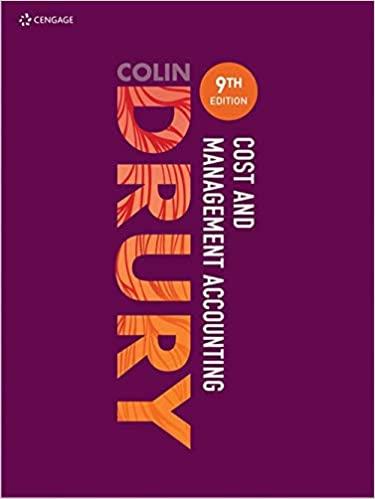P20-3A Determine if product should be sold or processed further. Thompson Industrial Products Inc. (TIPI) is a diversified industrial-cleaner processing company. The company's Dargar plant produces two products: a table cleaner and a floor cleaner from a common set of chemical inputs (CDG). Each week 900,000 ounces of chemical input are processed at a cost of $210,000 into 600,000 ounces of floor cleaner and 300,000 ounces of table cleaner. The floor cleaner has no market value until it is converted into a polish with the trade name Floor Shine. The additional processing costs for this conversion amount to $240,000. Floor Shine sells at $20 per 30-ounce bottle. The table cleaner can be sold for $17 per 25-ounce bottle. However, the table cleaner can be converted into two other products by adding 300,000 ounces of another compound (TCP) to the 300,000 ounces of table cleaner. This point process will yield 300,000 ounces each of table stain remover (TSR) and table polish (TP). The additional processing costs for this process amounts to $100,000. Both table products can be sold for $14 per $25-ounce bottle. The company decided not to process the table cleaner into TSR and TP based on the following analysis. Process Further Table Table Stain Table Cleaner Remover (TSR) Polish (TP) Total Production in ounces 300.000 300.000 300.000 Revenue S204.000 $168.000 $168.000 $336.000 Costs: CDG costs 70000" 52,500 52,500 105,000 TCP costs 50,000 50,000 100,000 Total costs 70,000 102,500 102,500 205,000 Weekly gross proft $134.000 $65,500 $65,500 $131,000 "It table cleaner is not processed further, it is allocated 1/3 of the $210,000 of CDG cost, which is equal to 1/3 of the total physical output If table cleaner is processed further, total physical output is 1,200,000 ounces. TSR and TP combined account for 50% of the total physical output and are each allocated 25% of the CDG cost Instructions 31 (a) Determine if management made the correct decision to not process the table cleaner further by doing the following. (1) Calculate the company's total weekly gross proft assuming the table cleaner is not processed further (2) Calculato the company's total wookly gross profit assuming the table cleaner is processed further (3) Compare the resulting not incomes and comment on management's decision 35 (b) Compare the rosulting net incomes and comment on management's decision 36 NOTE: Enter a number in cells requesting a value; enter either a number or a formula in cells with a "?". 0 3 4 5 25 27 8 30 32 33 34 Determine it management made the correct decision to not process the table cleaner further by doing the followir (1) Calculate the company's total weekly gross profit assuming the table cleaner is not processed further. 40 (a) 41 42 43 44 45 46 47 48 49 SO 51 Table Cleaner Not Processed Further Sales: Floor Shine ? Table cleaner ? Total Revenue ? Costs: CDG Additional costs of Floor Shine Total costs Gross profit Value Value 52 53 ? 54 55 56 (a) 57 58 59 60 61 62 63 Determine if management made the correct decision to not process the table cleaner further by doing the following (2) Calculate the company's total weekly gross profit assuming the table cleaner is processed further. Table Cleaner Processed Further Sales: Floor Shine Table Stain Remover Value Table Polish Total Revenue Value Value ? Costs: CDG I Additional costs of Floor Shine TCP Total costs Gross profit Value Value Value 64 65 66 67 68 69 70 71 72 73 74 (a) 75 76 77 2 Determine if management made the correct decision to not process the table cleaner further by doing the following. (3) Compare the resulting net incomes and comment on management's decision. Response: 87 (b) Compare the resulting net incomes and comment on management's decision. 88 89 90 91 92 93 94 Incremental revenue Incremental costs Total Don't Process Table Cleaner Further Value Value ? Process Table Cleaner Further Value Value ? Net Income Increase (Decrease) Value Value ? Response: 95 96 97 98 99 100 101 102 103 1041 105 106 107 100 After you have completed P20-3A, consider the following additional question. Assume that the selling price of the two table products after further processing changed to $13 for each 25-ounce bottle and the cost of TCP compound to further process changed to $120,000. How do these changes impact the decision to process or not process further









